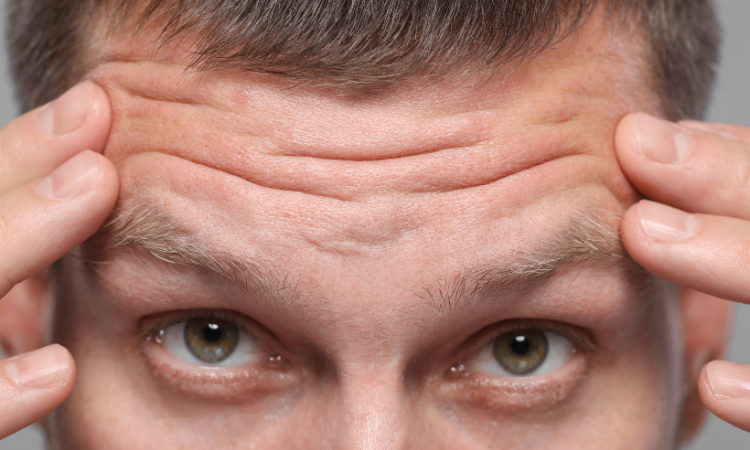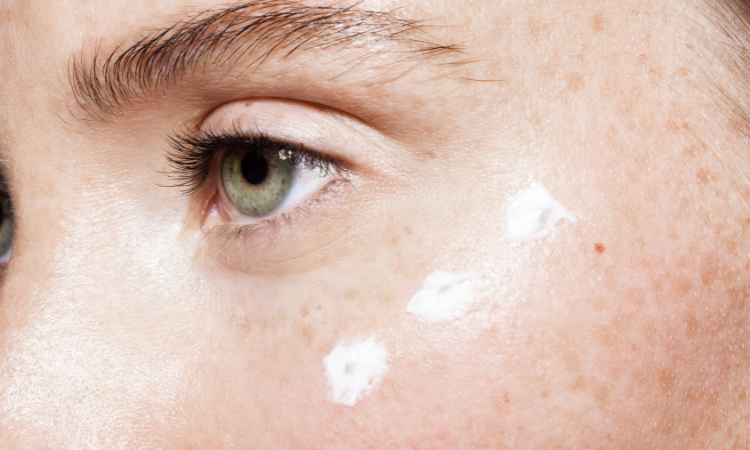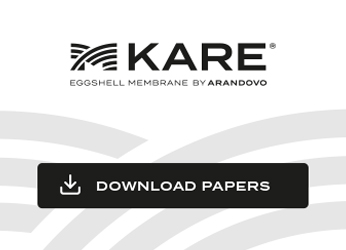Photoaging is continuously gaining more and more notoriety in the field of dermatology and skin care. As we better understand the effects of the sun on our skin, it is very important to know what photoaging is, its causes and how to prevent it in order to maintain a healthy and youthful skin.
Arandovo will tell you in depth everything you need to know about photoaging and effective strategies to protect your skin from sun damage. Keep on reading!

What is photoaging?
Photoaging refers to premature aging of the skin due to chronic exposure to UV radiation from the sun. Unlike natural aging, which is an inevitable biological process, photoaging is directly related to the harmful effects of the sun’s rays. UV radiation damages the DNA of skin cells, resulting in the formation of wrinkles, blemishes, and a very rough texture.
Facial or cutaneous photoaging
Photoaging may affect any area of the skin that is exposed to the sun, but it’s most noticeable on the face, neck, hands and forearms. Facial photoaging is of particular concern because facial skin is more delicate and constantly exposed.
These are the typical signs of facial photoaging:
- Fine and deep wrinkles.
- Skin flaccidity.
- Loss of elasticity.
- Dark spots or hyperpigmentation.
- Irregular skin texture.
- Dilated blood vessels (vasodilation).
- Dull skin.

Photoaging causes
Photoaging is primarily caused by prolonged and repeated exposure to UV radiation from the sun. These UV rays penetrate into the deeper layers of the skin and cause damage at cellular level. Some of the specific causes of photoaging include:
UV radiation
UVA and UVB rays are mainly responsible for skin damage. UVA rays penetrate deeper into the skin, affecting collagen and elastin fibers, while UVB rays are responsible for sunburn and direct DNA damage.
Sun photoaging
Over the years, daily exposure to the sun without adequate protection accumulates, leading to visible skin damage. This process can be accelerated by factors such as skin type, geographic location and continuous exposure to the sun without adequate protection, such as sunscreen.
Tanning booths
The use of tanning booths significantly increases the risk of photoaging due to the high concentration of UV radiation.
Lack of sunscreen
Not using sunscreen or not applying it correctly makes the skin vulnerable to sun damage, especially on peak exposure days.
Genetic factors
Some people are more susceptible to sun damage due to genetic factors that affect the skin’s ability to repair overall damage.
Difference between aging and photoaging
Although natural aging and photoaging share some symptoms, such as the loss of elasticity and formation of wrinkles, there are significant differences between both, so it is very important to know how to distinguish them.
Aging
Natural aging is the result of the passage of time and the biological changes that occur in the body. This type of aging is characterized by a gradual decrease in the production of collagen and elastin, essential proteins for skin firmness and elasticity.
Photoaging
Photoaging, on the other hand, is accelerated by exposure to UV radiation. Signs of photoaging include deeper wrinkles, dark spots, uneven texture and loss of volume in specific areas.
While natural aging is inevitable, photoaging can be prevented and controlled with the right strategies.
How to prevent photoaging
Preventing photoaging requires a combination of healthy habits and the use of specific skin protection products. Here are the most effective strategies:
Daily use of sunscreen
Apply a broad-spectrum sunscreen with an SPF of at least 50 every day, even on cloudy days and during winter. Be sure to reapply every two hours if you are outdoors, swimming or sweating.
Avoid sun exposure during peak hours
UV rays are more intense between 10 am and 4 pm. Try to seek shade during these hours and plan outdoor activities during times of lower solar intensity.
Do not use tanning booths
Avoid using tanning booths, as they significantly increase the risk of skin damage and photoaging.
Dermatological treatments
Specific treatments are available to treat photoaging. Chemical peels, laser therapy and intense pulsed light (IPL) treatments can reduce sun spots, improve skin texture and stimulate collagen production.
Skin care routine
Adopt a skin care routine that includes cleansing, gentle exfoliation, moisturizing and the use of specific products to repair and protect the skin. Retinoids, for example, are effective in improving skin texture and reducing wrinkles.
Hydration and healthy diet
Keep your skin hydrated by drinking enough water and eating a diet rich in fruits, vegetables and healthy fats. Foods rich in antioxidants can help protect the skin from within.
Regular check-ups with a dermatologist
Schedule regular check-ups with a dermatologist to evaluate the condition of your skin and receive personalized recommendations to prevent and treat photoaging.
Natural food supplements
Food supplements can play an important role in preventing photoaging by providing your skin with the nutrients it needs to keep it healthy and resistant to sun damage. These are some of the natural supplements that can help fight photoaging:
- Vitamin C
Vitamin C is a powerful antioxidant that helps to protect the skin from free radical damage caused by sun exposure. In addition, vitamin C is essential for the production of collagen, a key protein for maintaining skin elasticity and firmness.
- Vitamin E
Like vitamin C, vitamin E is an antioxidant that can help protect the skin from oxidative stress caused by UV radiation. It can also help reduce inflammation and promote skin healing.
- Omega-3 fatty acids
Omega-3 fatty acids, found in fatty fish such as salmon and mackerel, as well as chia seeds and walnuts, can help keep the skin hydrated and protected against sun damage.
- Coenzyme Q10
Coenzyme Q10 is an antioxidant found naturally in the body that helps protect cells from free radical damage. It has been shown to reduce wrinkle depth and improve skin elasticity.
Prevent photoaging with MKARE
Arandovo has developed MKARE®️, a 100% natural functional ingredient based on the eggshell membrane that is highly beneficial for all those who want to prevent photoaging.
MKARE®️ natively contains a unique source of clinically proven bioactive compounds and a membrane purity of 90%. Moreover, our functional ingredient is rich in collagen (I, V and X), hyaluronic acid, elastin, chondroitin, glucosamine and over 400 proteins that will keep your skin healthy and protected against UV rays.
In addition, MKARE®️ helps to increase skin elasticity, promotes hydration, enhances natural radiance and reduces wrinkles, helping to maintain a healthy and sun-protected skin.
Photoaging is a process that can be prevented by adopting healthy habits and using appropriate products to protect the skin from the sun. Education and awareness about the effects of the sun on our skin are critical to maintaining a healthy, youthful appearance.
Do not wait until the signs of photoaging are evident, start protecting your skin today and invest in its long-term health. Your skin will thank you!
Discover all the benefits of MKARE on our website, and get in touch with us if you have any questions or need more information.




